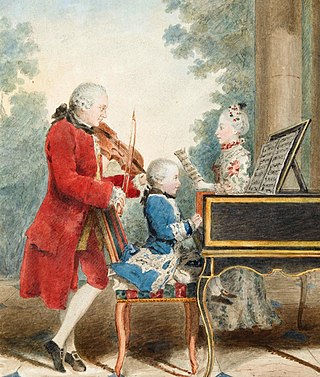
The Classical Period was an era of classical music between roughly 1750 and 1820.

The viola ( vee-OH-lə, Italian:[ˈvjɔːla,viˈɔːla]) is a string instrument of the violin family, and is usually bowed when played. Violas are slightly larger than violins, and have a lower and deeper sound. Since the 18th century, it has been the middle or alto voice of the violin family, between the violin (which is tuned a perfect fifth higher) and the cello (which is tuned an octave lower). The strings from low to high are typically tuned to C3, G3, D4, and A4.
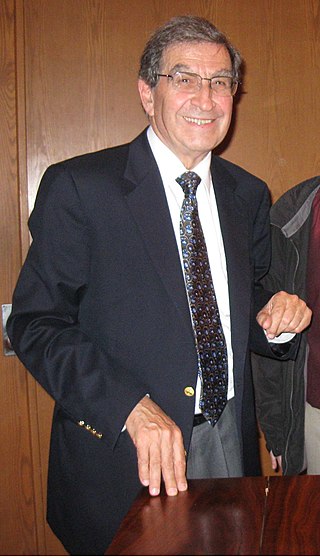
Malcolm Bilson is an American pianist and musicologist specializing in 18th- and 19th-century music. He is the Frederick J. Whiton Professor of Music in Cornell University, Ithaca, New York Bilson is one of the foremost players and teachers of the fortepiano; this is the ancestor of the modern piano and was the instrument used in Haydn, Mozart, and Beethoven's time.

The arpeggione is a six-stringed musical instrument fretted and tuned like a guitar, but with a curved bridge so it can be bowed like a cello, and thus similar to the bass viola da gamba. The instrument is sometimes also called a guitar violoncello. The body shape of the arpeggione is, however, more similar to a medieval fiddle than either the guitar or the bass viol. It is essentially a bass viol with a guitar-type tuning, E–A–d–g–b–e'. The arpeggione is especially suited to playing runs in thirds, double stops, and arpeggios.

The term romance has a centuries-long history. Applied to narrative ballads in Spain, it came to be used by the 18th century for simple lyrical pieces not only for voice, but also for instruments alone. The Oxford Dictionary of Music states that "generally it implies a specially personal or tender quality".
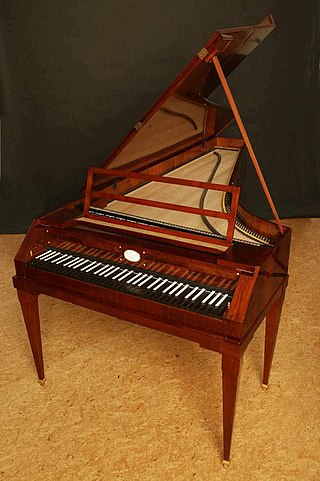
A fortepiano is an early piano. In principle, the word "fortepiano" can designate any piano dating from the invention of the instrument by Bartolomeo Cristofori in 1700 up to the early 19th century. Most typically, however, it is used to refer to the mid-18th to early-19th century instruments, for which composers of the Classical era, such as Haydn, Mozart, and the younger Beethoven, wrote their piano music.
The viola sonata is a sonata for viola, sometimes with other instruments, usually piano. The earliest viola sonatas are difficult to date for a number of reasons:
In music, instrumentation is the particular combination of musical instruments employed in a composition, and the properties of those instruments individually. Instrumentation is sometimes used as a synonym for orchestration. This juxtaposition of the two terms was first made in 1843 by Hector Berlioz in his Grand traité d'instrumentation et d'orchestration modernes, and various attempts have since been made to differentiate them. Instrumentation is a more general term referring to an orchestrator's, composer's or arranger's selection of instruments in varying combinations, or even a choice made by the performers for a particular performance, as opposed to the narrower sense of orchestration, which is the act of scoring for orchestra a work originally written for a solo instrument or smaller group of instruments.
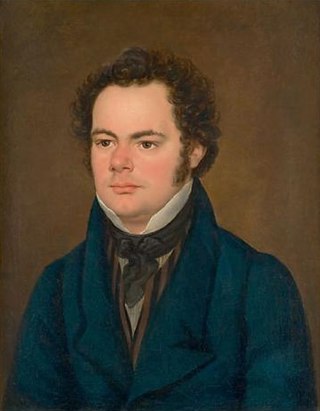
Franz Schubert's final chamber work, the String Quintet in C major is sometimes called the "Cello Quintet" because it is scored for a standard string quartet plus an extra cello instead of the extra viola which is more usual in conventional string quintets. It was composed in 1828 and completed just two months before the composer's death. The first public performance of the piece did not occur until 1850, and publication occurred three years later in 1853. Schubert's only full-fledged string quintet, it has been praised as "sublime" or "extraordinary" and as possessing "bottomless pathos," and is generally regarded as Schubert's finest chamber work as well as one of the greatest compositions in all chamber music.

The String Quartet No. 13 in A minor, D 804, Op. 29, was written by Franz Schubert between February and March 1824. It dates roughly to the same time as his monumental Death and the Maiden Quartet, emerging around three years after his previous attempt to write for the string quartet genre, the Quartettsatz, D 703, that he never finished.
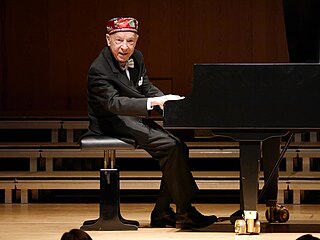
Paul Badura-Skoda was an Austrian pianist.

Jos Van Immerseel is a Belgian harpsichordist, pianist and conductor.
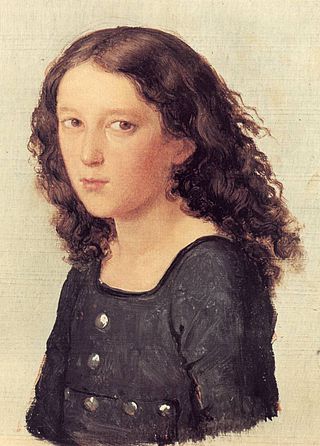
The Clarinet Sonata in E-flat major is a composition for clarinet and piano by Felix Mendelssohn.
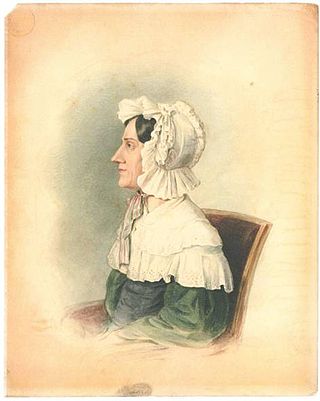
Nannette Streicher was a German piano maker, composer, music educator, writer and a close friend of Ludwig van Beethoven.

Aloys and AlfonsKontarsky were German duo-pianist brothers who were associated with a number of important world premieres of contemporary works. They had an international reputation for performing modern music for two pianists, although they also performed the standard repertoire and they sometimes played separately. They were occasionally joined by their younger brother Bernhard in performances of pieces for three pianos. After suffering a stroke in 1983, Aloys retired from performing.
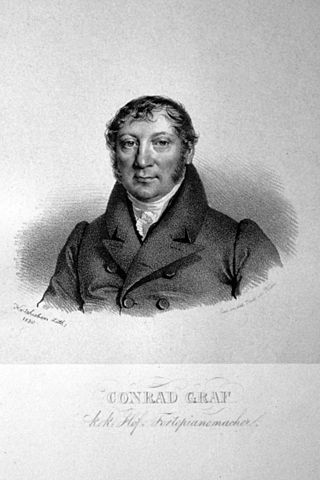
Conrad Graf was an Austrian-German piano maker. His pianos were used by Beethoven, Schubert, Chopin, and Robert and Clara Schumann, among others.
String Quintet No. 2 in G major, Op. 111, is a work by Johannes Brahms composed in 1890 and published in 1891. It is known as the Prater Quintet. Brahms intended it to be his last piece of music, though he later produced a number of piano pieces and the two sonatas for clarinet or viola and piano. The first performance of the Quintet in Vienna on November 11, 1890 was a sensation.

Paul McNulty is a builder of historical pianos, described by the New Grove as "famous for the high standard of [his] instruments." Within the community of builders, McNulty is noted for his efforts to extend the production of historically informed instruments later into history: while he has built many fortepianos in 18th-century style, he has also progressively sought to span the gap between the fortepiano and the fully modern piano that emerged around the last third of the 19th century. The expanding diversity of McNulty's productions has thus helped "provide an opportunity to extend keyboard performing practice to include the piano repertory of the 19th century".
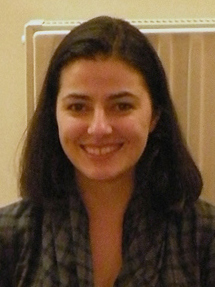
Dobrinka Tabakova is a Bulgarian-British composer.
Klaus Storck was a German cellist who appeared internationally as soloist and chamber musician. He also edited music for cello. He often appeared in a duo with his wife, the harpist Helga Storck, and composers wrote music for them.
















